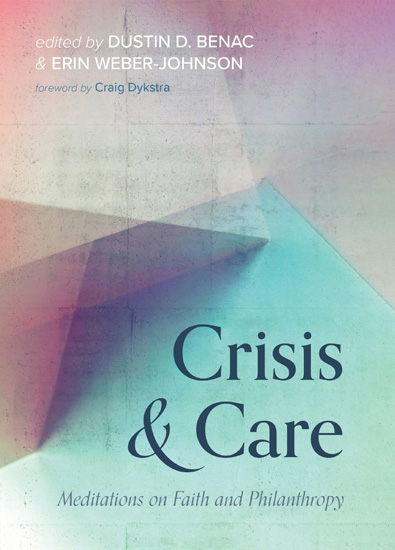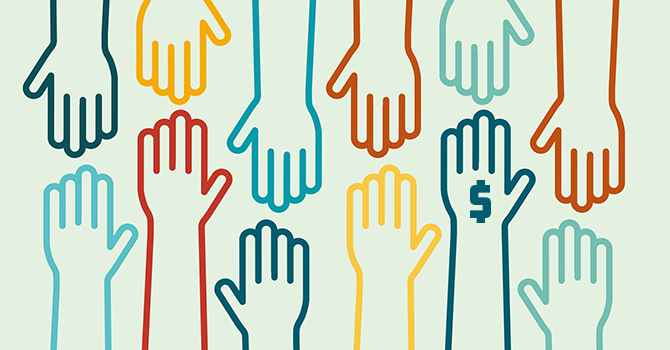Every caregiver knows the challenge of guiding a preschooler from holding onto “mine” to sharing with others. Leaders often face a similar challenge with our institutions. The instinct to grasp and hold is very strong and yet ultimately self-defeating.
We face these concerns head-on two times a year, when building a budget and when raising money. No matter the specific time of year, the season for building a budget frequently involves fighting for your fair share. December is the season for raising money for all of us in the United States. My congregation often receives three times its normal monthly offering this month, and many organizations receive 40 percent of the annual budget during December. Everyone is urging donors to give at the same time.
Is it possible to cultivate a mindset within our congregations and institutions that would reframe the stresses of the budgeting and fundraising season? Could a “sharing” mindset open up more creativity and decrease the feeling of fighting for scarce resources?
The mindset I have in mind is “generosity.”
Christian Smith and Hilary Davidson led a team of sociologists at Notre Dame in examining what it means to be generous in America. They looked at the impact on quality of life of being generous and ungenerous. The result can be found in “The Paradox of Generosity: Giving We Receive, Grasping We Lose.”
The researchers identified the following five practices of generous people:
- Voluntary financial giving
- Volunteering time
- Relational generosity (being generous with one's attention and emotions)
- Neighborly generosity (acts of kindness towards those who live and work around you)
- Personal importance of generosity
Smith and Davidson spend much of the book cataloguing the profound benefit that generosity has on personal well-being as measured by happiness, bodily health, purpose in living, avoidance of depression and interest in personal growth.
The book argues that generosity is not means to these ends, but is itself a mindset to be desired for its own good. The authors argue that living several of the five practices of generous people will shape the generosity mindset.
The book is worth a read because it helps us recognize the generous people that are all around and challenges the reader to consider how one can grow to be more generous.
When the Lake Institute on Faith & Giving at the Lilly Family School of Philanthropy at Indiana University teaches generosity as part of its Executive Certificate in Religious Fundraising, much of the second day is devoted to each participant’s thoroughly examining her/his individual story of giving. The training is based on the belief that the first step in encouraging generosity is to practice it.
The mindset of generosity is important for more than development officers. The mindset must be cultivated with all the leaders -- lay and clergy.
A friend was serving as the youth minister of a large congregation in an exclusive community. The senior pastor was concerned that the congregation’s giving was below expectations. He hosted a meal for all the top contributing families. The youth minister was stunned that he received an invitation. It dawned on my friend that the fancy cars that his teenagers and their parents drove might well be purchased on credit. They likely had high income and high expenses. The realization helped him focus conversations with the kids and their families about articulating one’s purpose and defining priorities, two keys to a generous mindset. The group began reflecting on the meaning of the service projects in terms of impact on everyone, including themselves.
Cultivating a mindset of generosity should impact all the aspects of the institution’s work. I have seen grad schools in which the students were treated as an afterthought. The faculty’s research interests were primary. A professor once told me that the school really did not need students. As a student, I could feel that attitude come through. I have been affiliated with other schools where nearly every question is honored, where people look you in the face and you feel like you belong.
Donors have occasionally complained to me that they often perceive that institutions perceive them as an ATM, processing a withdrawal. A mindset of generosity encourages seeing everyone -- donors, members, clients, staff, friends -- as people with all kinds of gifts to share. Money is only one part of the equation.
Where are the signs of generosity in your institution now? How can you participate, encourage and lift up those signs? What else can you do to reframe current practices so that they reflect a more generous spirit?












